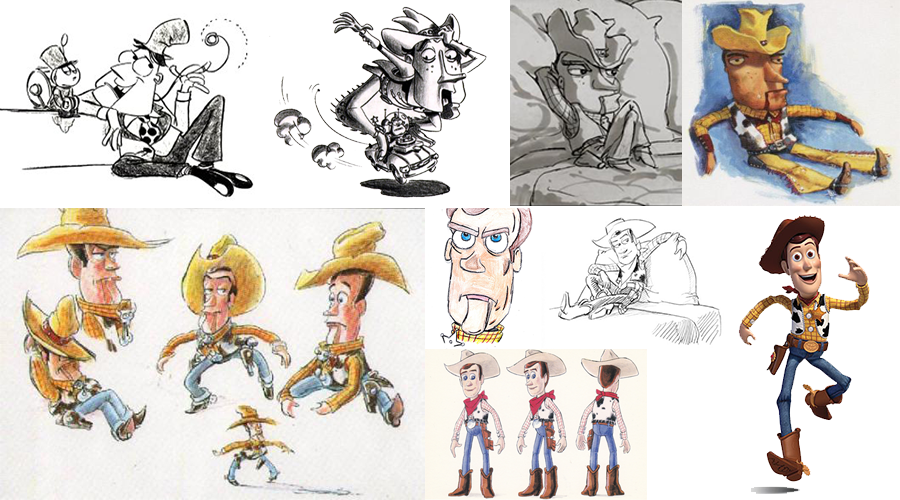Iteration is the act of repeating a process in order to generate a sequence of outcomes. The aim of iteration is to approach one desired goal, target or result. Each repetition of a set of steps is one iteration, where the result of one iteration directly leads into the start of another.
For example using computing terms, iteration is when you have an looped segment of code; if x != 5, x = x + 1 over and over, until x = 5.
Iteration applies to character designs, scripts, and characters themselves. Characters don't get just one design and that's final, there are steps and processes the team goes through until they reach the final look.
For example, in Toy Story, Woody and Buzz Lightyear looked drastically different to how they turned out in the completed film. Originally, Woody started out as a ventriloquist dummy cowboy, before eventually being toned down into a cowboy ragdoll. Buzz Lightyear also went through some changes, going from a small, 50s-esque spaceman to a taller space marine.
(Woody (various concept designs) - credit Pixar Animation Studio)
(Woody (final render) - credit Pixar Animation Studio)
(Tempus from Morph - credit Bud Luckey)
(Buzz Lightyear (final render) - credit Pixar Animation Studios)
Character motivations and attributes also change through iteration too, depending on if the audience is responding well to the characters or not. Using the Toy Story example again, Woody was originally designed to be a selfish, cruel leader of Andy's toys who resented anything new that came along. Buzz, originally named Tempus from Morph, was even more naive than in the final film, and was too trusting of Woody, whereas final Buzz distrusts Woody if anything.
(Toy Story Black Friday Reel - credit Pixar Animation Studios)
Iteration can also apply to the animation tests we've been carrying out in our dynamics sessions!
FAILURE.
The basic definition of failure is a lack of success. It's the fact of someone or something not succeeding. But it's not something to fear, and we shouldn't have the fear of making our first and worst attempts!
We watched a TEDxBYU talk, hosted by Eduardo Zanatta, who talks about failure.
(Failure Is Part Of Success - credit TED on YouTube, Eduardo Zanatta)
We shouldn't let the fear of failure blind us and make us overly cautious when trying the new; it's good to take risks and experiment!
We learn most when things go wrong. And even with that in mind, we should TRY and fail sometimes; we can look at them and reflect, see where we can improve and where we've come from!
With all that said, the goal of the session was just to improve upon an earlier animation we'd done prior. We could choose a ball bounce, pendulum swing, secondary action, etc. I decided to go with my walk cycle, and try and improve upon it by actually ADDING the second step.
Making the frameswas simple enough, just taking the original frames that from the first step, and using them as reference when drawing the same motion with the limbs swapped sides. In total, I did ~8 new frames for the second step; all odd numbered main frames.


No comments:
Post a Comment